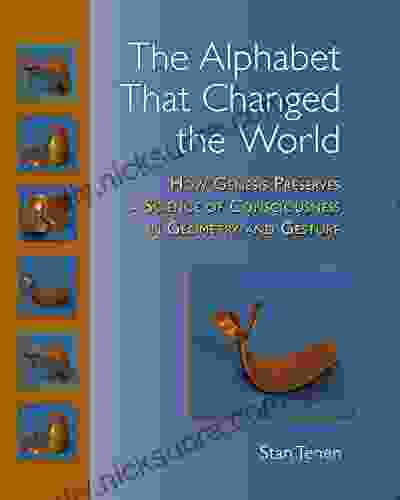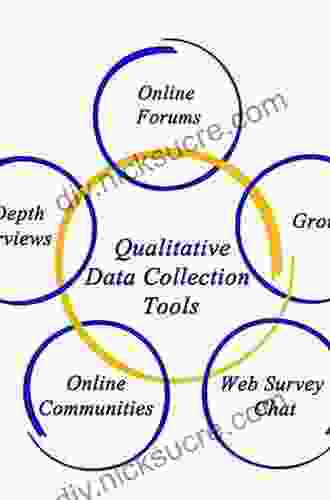Design, Development, and Applications of Qualitative Research Methods: A Comprehensive Guide

4.8 out of 5
| Language | : | English |
| File size | : | 17505 KB |
| Text-to-Speech | : | Enabled |
| Screen Reader | : | Supported |
| Enhanced typesetting | : | Enabled |
| Word Wise | : | Enabled |
| Print length | : | 239 pages |
Qualitative research methods play a crucial role in understanding complex phenomena, providing rich and meaningful insights into human behavior, experiences, and social interactions. Unlike quantitative research, which focuses on numerical data and statistical analysis, qualitative research explores data in its natural form, allowing researchers to gain a deeper understanding of the subjective experiences and perspectives of research participants.
This comprehensive guide will delve into the design, development, and applications of qualitative research methods. We will explore the advantages and limitations of these methods, provide detailed guidance on data collection and analysis techniques, and discuss best practices for ensuring the reliability and validity of qualitative research findings.
Design Considerations
The design of a qualitative research project is crucial for ensuring the quality and relevance of the data collected. Key considerations include:
- Research question: Clearly define the research question or problem you aim to address.
- Research design: Choose the appropriate research design, such as grounded theory, ethnography, or phenomenology, that aligns with your research question.
- Sampling strategy: Determine the type of sampling (e.g., purposive, snowball) and criteria for selecting research participants.
- Data collection methods: Select data collection methods (e.g., interviews, observations, focus groups) that are appropriate for your research question and data type.
- Ethical considerations: Ensure that your research adheres to ethical principles, including informed consent, confidentiality, and respect for participants.
Data Collection Techniques
Qualitative research utilizes various data collection techniques to capture rich and meaningful data. Common methods include:
- In-depth interviews: One-on-one conversations that allow researchers to explore participants' experiences and perspectives in detail.
- Focus groups: Group discussions facilitated by a researcher to gather insights from multiple participants simultaneously.
- Observation: Observing and recording participants' behaviors and interactions in natural settings.
- Participant observation: Researchers engage in the activities of the research setting while observing and recording their experiences.
- Document analysis: Examining written or visual documents (e.g., diaries, emails, photographs) to understand past events or experiences.
Data Analysis and Interpretation
Qualitative data analysis involves organizing, interpreting, and synthesizing collected data to generate meaningful insights. Key techniques include:
- Coding: Identifying patterns and assigning labels to data segments to organize and categorize findings.
- Thematic analysis: Identifying recurring themes and concepts within the data to understand commonalities and patterns.
- Grounded theory: Building a theory based on data collected during the research process.
- Narrative analysis: Interpreting data as stories or narratives to understand the perspectives and experiences of participants.
- Discourse analysis: Examining language and communication patterns in the data to uncover underlying meanings and power dynamics.
Applications of Qualitative Research Methods
Qualitative research methods find applications across a wide range of disciplines, including:
- Social sciences: Understanding social phenomena, cultural practices, and human behavior.
- Education: Exploring teaching and learning processes, student experiences, and educational policy.
- Healthcare: Investigating patient experiences, healthcare outcomes, and provider-patient interactions.
- Business and marketing: Uncovering consumer behavior, market trends, and brand perception.
- Design and innovation: Understanding user experiences, product development, and design thinking.
Advantages and Limitations of Qualitative Research Methods
Qualitative research methods offer several advantages:
- Rich and in-depth data: Provides detailed and comprehensive insights into participants' experiences and perspectives.
- Flexibility and adaptability: Allows researchers to adjust their research design and data collection methods based on emerging findings.
- Contextual understanding: Offers a deep understanding of the context in which data is collected, providing valuable insights into social and cultural factors.
- Empowerment of participants: Gives participants a voice and allows their experiences to inform research findings.
However, qualitative research methods also have limitations:
- Subjectivity: Findings may be influenced by the researchers' interpretations and biases.
- Limited generalizability: Results may not be applicable to larger populations beyond the research participants.
- Time-consuming and resource-intensive: Data collection and analysis require significant time, effort, and resources.
- Ethical complexities: Researchers must carefully navigate ethical considerations to ensure the protection of participants.
Best Practices for Qualitative Research
To ensure the reliability and validity of qualitative research findings, several best practices should be followed:
- Triangulation: Use multiple data collection methods and sources to enhance the credibility of findings.
- Peer review: Have other researchers review your research design and findings to minimize bias.
- Reflexivity: Be aware of your own biases and assumptions and consider how they may influence your research.
- Ethical research: Adhere to ethical guidelines throughout the research process, ensuring informed consent, confidentiality, and respect for participants.
- Transparency: Clearly document your research methods and findings to allow readers to evaluate the trustworthiness of your results.
Qualitative research methods provide valuable insights into human experiences and social phenomena. By understanding the design, development, and applications of these methods, researchers can effectively explore complex issues, generate meaningful findings, and contribute to a deeper understanding of the human world. Whether you are a seasoned researcher or a novice exploring qualitative methodologies, this comprehensive guide has equipped you with the essential knowledge to conduct high-quality qualitative research.
4.8 out of 5
| Language | : | English |
| File size | : | 17505 KB |
| Text-to-Speech | : | Enabled |
| Screen Reader | : | Supported |
| Enhanced typesetting | : | Enabled |
| Word Wise | : | Enabled |
| Print length | : | 239 pages |
Do you want to contribute by writing guest posts on this blog?
Please contact us and send us a resume of previous articles that you have written.
 Fiction
Fiction Non Fiction
Non Fiction Romance
Romance Mystery
Mystery Thriller
Thriller SciFi
SciFi Fantasy
Fantasy Horror
Horror Biography
Biography Selfhelp
Selfhelp Business
Business History
History Classics
Classics Poetry
Poetry Childrens
Childrens Young Adult
Young Adult Educational
Educational Cooking
Cooking Travel
Travel Lifestyle
Lifestyle Spirituality
Spirituality Health
Health Fitness
Fitness Technology
Technology Science
Science Arts
Arts Crafts
Crafts DIY
DIY Gardening
Gardening Petcare
Petcare Sadie Robertson Huff
Sadie Robertson Huff Lindsey Vonn
Lindsey Vonn Filippo Coarelli
Filippo Coarelli Bree Moore
Bree Moore Mark Obmascik
Mark Obmascik Sandra Niche
Sandra Niche A M Wilson
A M Wilson Sherrilyn Kenyon
Sherrilyn Kenyon John L Messina
John L Messina Harry Yoon
Harry Yoon Rachael Allen
Rachael Allen Andreas Quast
Andreas Quast Peter Rees
Peter Rees Anna Goldsworthy
Anna Goldsworthy Homeira Qaderi
Homeira Qaderi Tsao Lin E Moy L Ac Msom
Tsao Lin E Moy L Ac Msom Shenyang Guo
Shenyang Guo Heather Anderson
Heather Anderson Adrian Dater
Adrian Dater Crystal Cestari
Crystal Cestari A G Howard
A G Howard Jonathan Eig
Jonathan Eig Andrea Falk
Andrea Falk Bruce Tremper
Bruce Tremper Barbara J Bain
Barbara J Bain Alison Cotter
Alison Cotter Pintip Dunn
Pintip Dunn N J Enfield
N J Enfield Jordan B Peterson
Jordan B Peterson Rysa Walker
Rysa Walker Gary Gruber
Gary Gruber Bear Heart
Bear Heart Kenay Keira
Kenay Keira Caspar Craven
Caspar Craven John Halligan
John Halligan King Solomon
King Solomon Len Fisher
Len Fisher John Brenkus
John Brenkus Ken Castor
Ken Castor Don Fink
Don Fink Kenn Bivins
Kenn Bivins John Mordechai Gottman
John Mordechai Gottman Lilith Mclelland
Lilith Mclelland Francis Pryor
Francis Pryor Jim Allen
Jim Allen A J Angulo
A J Angulo Jane Austen
Jane Austen Pardha S Pyla
Pardha S Pyla Dan Limbaugh
Dan Limbaugh Jon Gillespie Brown
Jon Gillespie Brown Dmv Test Bank
Dmv Test Bank Dr Howard Rankin
Dr Howard Rankin Oba Ilari Aladokun
Oba Ilari Aladokun Dr Stephanie Bloodworth Psyd
Dr Stephanie Bloodworth Psyd Sky Marsen
Sky Marsen Jennifer Longmore
Jennifer Longmore Carrie Harper
Carrie Harper Amanda Ostrander
Amanda Ostrander Rens Bod
Rens Bod Byron Pitts
Byron Pitts William Ramsey
William Ramsey A G Cairns Smith
A G Cairns Smith Valerio Varesi
Valerio Varesi Dale P Clemens
Dale P ClemensA G
 Aaron Kleinmeyer
Aaron Kleinmeyer Bruce Lansky
Bruce Lansky Helen E Johnson
Helen E Johnson Michael Shingleton
Michael Shingleton Eric Blehm
Eric Blehm Ken Alder
Ken Alder R A Mejia
R A Mejia Tiara R Brown
Tiara R Brown David G Taylor
David G Taylor Max Tegmark
Max Tegmark Val Emmich
Val Emmich Bob Trueman
Bob Trueman Anne Sigismund Huff
Anne Sigismund Huff Hazel Holmes
Hazel Holmes Lindsey Lapointe
Lindsey Lapointe Georgia Varozza
Georgia Varozza Catherine Rodgers
Catherine Rodgers Yasu
Yasu Armin A Brott
Armin A Brott Jonathan Mckee
Jonathan Mckee Zander Brumbaugh
Zander Brumbaugh Emily Evans
Emily Evans Russell Sher
Russell Sher Roy Richard Grinker
Roy Richard Grinker Eric Sevareid
Eric Sevareid Nicole Conway
Nicole Conway Din Daniels
Din Daniels Jim Vernes
Jim Vernes Lillian Tibbles Phd
Lillian Tibbles Phd Mike Tidwell
Mike Tidwell Remy Agee
Remy Agee Peter Shelton
Peter Shelton Robert P Harris
Robert P Harris Cailin O Connor
Cailin O Connor Catherine Stonehouse
Catherine Stonehouse Ryan Gray
Ryan Gray Akash Kapur
Akash Kapur Michael Labossiere
Michael Labossiere Chelsea Crockett
Chelsea Crockett A J Carlisle
A J Carlisle Michael D Coogan
Michael D Coogan Scott A Ostrow
Scott A Ostrow Manoush Zomorodi
Manoush Zomorodi Cynthia Ulrich Tobias
Cynthia Ulrich Tobias Karla Helbert
Karla Helbert Peter Goldenthal
Peter Goldenthal Dave Lowry
Dave Lowry Cath Smith
Cath Smith Tim Flanagan
Tim Flanagan Joseph Mctaggart
Joseph Mctaggart Christiane Kutik
Christiane Kutik A F Stewart
A F Stewart Sergey Kosarevsky
Sergey Kosarevsky Francis Fukuyama
Francis Fukuyama Micha Gorelick
Micha Gorelick Anne Deans
Anne Deans Michael Dell
Michael Dell Sean Skahan
Sean Skahan Rick Telander
Rick Telander Sandra Swenson
Sandra Swenson Rosie Garthwaite
Rosie Garthwaite Ed Webster
Ed Webster A H Almaas
A H Almaas Anji Andrews
Anji Andrews Sam Warburton
Sam Warburton Seth M Holmes
Seth M Holmes Jec Aristotle Ballou
Jec Aristotle Ballou Laura Pohl
Laura Pohl Stan Skinner
Stan Skinner Saxton Pope
Saxton Pope Thomas R Martin
Thomas R Martin Lisa Murphy
Lisa Murphy A J Mackenzie
A J Mackenzie Adam Savage
Adam Savage A J Messenger
A J Messenger Raymonde Carroll
Raymonde Carroll Megan Vickers
Megan Vickers Day Leitao
Day Leitao Pete Ripmaster
Pete Ripmaster A J Stewart
A J Stewart Ilya Ru
Ilya Ru Susan Cooper
Susan Cooper Joe Pepitone
Joe Pepitone Michael Lanza
Michael Lanza Steven Raichlen
Steven Raichlen Nancy Mckenzie
Nancy Mckenzie Susan Aud Sonders
Susan Aud Sonders Loretta Sponsler
Loretta Sponsler Tony Wright
Tony Wright Gordon Macquarrie
Gordon Macquarrie Mj Porter
Mj Porter Kathy Koch
Kathy Koch Stan Tenen
Stan Tenen Richard Heath
Richard Heath Abigail Burd Lcsw Pmh C
Abigail Burd Lcsw Pmh C Vitaly Pedchenko
Vitaly Pedchenko Lucy Christopher
Lucy Christopher Steve Hindman
Steve Hindman William Scott Wilson
William Scott Wilson Sonya Chappell
Sonya Chappell Peter Nichols
Peter Nichols John Williams
John Williams Rebecca Black
Rebecca Black Andrew Henderson
Andrew Henderson Leigh Newman
Leigh Newman Dr Alan Whitcomb
Dr Alan Whitcomb Todd Downs
Todd Downs Okina Baba
Okina Baba Louis Jacques Dorais
Louis Jacques Dorais Gabrielle Coleman
Gabrielle Coleman Lou Tabory
Lou Tabory Daniel S Pierce
Daniel S Pierce Val Mcdermid
Val Mcdermid Susanne Foitzik
Susanne Foitzik Michelle Maccarthy
Michelle Maccarthy Shauna Lynn Panczyszyn
Shauna Lynn Panczyszyn Dirk F Moore
Dirk F Moore Jennifer L Armentrout
Jennifer L Armentrout Steve Angers
Steve Angers Charles Edward Chapel
Charles Edward Chapel Glenn Patron
Glenn Patron Timothy J Gawne
Timothy J Gawne Lauren Oliver
Lauren Oliver Lyla Lee
Lyla Lee Ridge Magee
Ridge Magee Cristian Salcescu
Cristian Salcescu Walter Dean Myers
Walter Dean Myers Patrick Meechan
Patrick Meechan Paul Mccarthy
Paul Mccarthy Barry Werth
Barry Werth Thomas Mcguane
Thomas Mcguane Ray Bradbury
Ray Bradbury Lyndall Clipstone
Lyndall Clipstone Helen Fitzgerald
Helen Fitzgerald Marc S Sabatine
Marc S Sabatine A R Vasishtha
A R Vasishtha Jennifer N Smith
Jennifer N Smith Matthieu Ricard
Matthieu Ricard Christopher Small
Christopher Small Kenneth Cloke
Kenneth Cloke John Long
John Long A M Strickland
A M Strickland Mike Branon
Mike Branon Susan Striker
Susan Striker Charles Szypszak
Charles Szypszak Grady Hendrix
Grady Hendrix Nick Jackson
Nick Jackson David Deutsch
David Deutsch Stephen R Lawhead
Stephen R Lawhead Dr Kevin Leman
Dr Kevin Leman Alexander Greenmaj
Alexander Greenmaj Jm Mason
Jm Mason Arlin Smith
Arlin Smith Dan Romanchik Kb6nu
Dan Romanchik Kb6nu David Spiegelhalter
David Spiegelhalter Mandy Rivers
Mandy Rivers Cassandra Clare
Cassandra Clare Todd Wanerman
Todd Wanerman Businessnews Publishing
Businessnews Publishing Jean Philippe Dionne
Jean Philippe Dionne Roxanne Martin
Roxanne Martin Giordano Scalzo
Giordano Scalzo David Magee
David Magee A Roger Ekirch
A Roger Ekirch Eileen Tracy
Eileen Tracy Alex Karp
Alex Karp Hicham And Mohamed Ibnalkadi
Hicham And Mohamed Ibnalkadi William Bauer
William Bauer Niall Ferguson
Niall Ferguson Elisabeth Fassas
Elisabeth Fassas Helen Buckley
Helen Buckley Marcus Butler
Marcus Butler Ari Tuckman
Ari Tuckman Boston T Party
Boston T Party Dane Huckelbridge
Dane Huckelbridge Timothy C Urdan
Timothy C Urdan Tanya Selvaratnam
Tanya Selvaratnam Jennifer Senior
Jennifer Senior David J Vanbergen Jr
David J Vanbergen Jr Jonathan S Rose
Jonathan S Rose Peter Maas
Peter Maas Rekha Ramcharan
Rekha Ramcharan David Remnick
David Remnick Erin Watt
Erin Watt Fernanda Pirie
Fernanda Pirie Cyndi Kinney
Cyndi Kinney Todd Rose
Todd Rose A L Knorr
A L Knorr Roger Zelazny
Roger Zelazny Zen Lylah
Zen Lylah A J Mackinnon
A J Mackinnon Brian Clegg
Brian Clegg Freya Hoffmeister
Freya Hoffmeister Alf Wilkinson
Alf Wilkinson Monte Burke
Monte Burke Amos Yong
Amos Yong Zen Faulkes
Zen Faulkes Rina Kent
Rina Kent Leandro Taub
Leandro Taub William Monk
William Monk Eva Mauer
Eva Mauer Larit Levy
Larit Levy Cathy A Malchiodi
Cathy A Malchiodi Ray Ordorica
Ray Ordorica Jeff Kane
Jeff Kane Kerri Hummingbird Sami
Kerri Hummingbird Sami Blair Holden
Blair Holden William C Oakes
William C Oakes Meghan Leahy
Meghan Leahy Bryan Berg
Bryan Berg Bob Plager
Bob Plager Gemma Milne
Gemma Milne Kathlyn Gay
Kathlyn Gay Eugene Don
Eugene Don Ken Dryden
Ken Dryden Scientia Media Group
Scientia Media Group Charles Butler
Charles Butler Jose M Forero Bautista
Jose M Forero Bautista Noah Gift
Noah Gift Vernon Trafford
Vernon Trafford Paul Watzlawick
Paul Watzlawick Certsquad Professional Trainers
Certsquad Professional Trainers Dean R Johnson
Dean R Johnson Iasha King
Iasha King Dame Darcy
Dame Darcy Mitch Landrieu
Mitch Landrieu Karl Knopf
Karl Knopf Soap2day Publication
Soap2day Publication Garret Romaine
Garret Romaine Natalie Pompilio
Natalie Pompilio Lauren Muhlheim
Lauren Muhlheim The R A
The R A Leslie Stager
Leslie Stager Bob Frye
Bob Frye Philip Yarrow
Philip Yarrow A K Davidson
A K Davidson Bill Jones
Bill Jones Upton Sinclair
Upton Sinclair Alyssa Padgett
Alyssa Padgett Linda Tuhiwai Smith
Linda Tuhiwai Smith Jennie Finch
Jennie Finch Jamie Vardy
Jamie Vardy William F Mann
William F Mann Katerina Griffith
Katerina Griffith Toni Natalie
Toni Natalie Eric Armstrong
Eric Armstrong A L Graziadei
A L Graziadei Tammara Webber
Tammara Webber Sharie King
Sharie King Calvin L Chou
Calvin L Chou Jamal Moustafaev
Jamal Moustafaev A J Hamler
A J Hamler Flo Perry
Flo Perry Virginia Willis
Virginia Willis Michael Lardon
Michael Lardon Russell Davis
Russell Davis Frost Kay
Frost Kay Anthony J Onwuegbuzie
Anthony J Onwuegbuzie Chuck Whelon
Chuck Whelon Kevin Adams
Kevin Adams David H Barlow
David H Barlow George Francis Dow
George Francis Dow Joel David Hamkins
Joel David Hamkins William Minto
William Minto Helen Marot
Helen Marot Dawn Huebner
Dawn Huebner Mrjamvad
Mrjamvad James Baldwin
James Baldwin Lisa Pease
Lisa Pease Rafe Esquith
Rafe Esquith Peter Godfrey Smith
Peter Godfrey Smith David A Wells
David A Wells Sarah Sutton
Sarah Sutton Randy Friedman
Randy Friedman Matthew J Friedman
Matthew J Friedman Josh Skeen
Josh Skeen Marlynn Jayme Schotland
Marlynn Jayme Schotland Matt Brown
Matt Brown Winston Starr
Winston Starr K A Riley
K A Riley John D Currid
John D Currid Marks Prep
Marks Prep Joshua Akin
Joshua Akin Mark Ryan
Mark Ryan Harrison Fluss
Harrison Fluss John L Parker Jr
John L Parker Jr Christine Wheeler
Christine Wheeler E S Wynn
E S Wynn Lilin Yang
Lilin Yang Shanterra Mcbride
Shanterra Mcbride Tripp Bowden
Tripp Bowden Diane Burke Fessler
Diane Burke Fessler Lou Zambello
Lou Zambello Rebecca A Moyes
Rebecca A Moyes Jonalu Johnstone
Jonalu Johnstone Heather Gudenkauf
Heather Gudenkauf Philip Golding
Philip Golding Polly Moore
Polly Moore Joe Navarro
Joe Navarro Sherine Hamdy
Sherine Hamdy Kenneth Cline
Kenneth Cline Rebecca Pelky
Rebecca Pelky Anghel Leonard
Anghel Leonard Taha Sochi
Taha Sochi Jan Morris
Jan Morris Olivia Smith
Olivia Smith Brad K Chambers
Brad K Chambers Thomas C Tabor
Thomas C Tabor Jack Grimshaw
Jack Grimshaw Chris Diamond
Chris Diamond John Almberg
John Almberg Diane Stresing
Diane Stresing Linh Phung
Linh Phung Thomas Hager
Thomas Hager Matilda Ramsay
Matilda Ramsay Tom Jordan
Tom Jordan Bruce Collier
Bruce Collier Mia Kankimaki
Mia Kankimaki Katrina Abbott
Katrina Abbott Dale Dougherty
Dale Dougherty Sarah Jo Brown
Sarah Jo Brown W Timothy Gallwey
W Timothy Gallwey Corina Morariu
Corina Morariu Todd Gitlin
Todd Gitlin Dr Tricia Groff
Dr Tricia Groff Judi Garman
Judi Garman Shelly Mazzanoble
Shelly Mazzanoble Jennifer Trainer Thompson
Jennifer Trainer Thompson Raymond J Carroll
Raymond J Carroll Angela Himsel
Angela Himsel Chris I Naylor
Chris I Naylor Peter Zheutlin
Peter Zheutlin Raymond M Smullyan
Raymond M Smullyan Kelly Starrett
Kelly Starrett Watt Key
Watt Key
Light bulbAdvertise smarter! Our strategic ad space ensures maximum exposure. Reserve your spot today!

 Ivan TurgenevThe Essential Handbook: Your Comprehensive Guide to Equipment, Training, and...
Ivan TurgenevThe Essential Handbook: Your Comprehensive Guide to Equipment, Training, and... Harold BlairFollow ·15.6k
Harold BlairFollow ·15.6k Rod WardFollow ·12.6k
Rod WardFollow ·12.6k Federico García LorcaFollow ·17.5k
Federico García LorcaFollow ·17.5k Robert BrowningFollow ·5.8k
Robert BrowningFollow ·5.8k Roald DahlFollow ·13k
Roald DahlFollow ·13k Miguel NelsonFollow ·17.4k
Miguel NelsonFollow ·17.4k Alexander BlairFollow ·5k
Alexander BlairFollow ·5k Felipe BlairFollow ·17.8k
Felipe BlairFollow ·17.8k

 Franklin Bell
Franklin BellHow Genesis Preserves Science Of Consciousness In...
The book of Genesis is...

 Ted Simmons
Ted SimmonsAt Day's Close, Night in Times Past
As the sun dips...

 Kenneth Parker
Kenneth ParkerRose Under Fire: Code Name Verity - A Heartbreaking and...
In the annals of...

 Jerry Hayes
Jerry HayesNurturing Massage for Pregnancy: A Comprehensive Guide to...
Pregnancy is...

 Blake Bell
Blake BellFill in the Blank: Word Kind of Animal Farm for Kids and...
This interactive fill-in-the-blank...
4.8 out of 5
| Language | : | English |
| File size | : | 17505 KB |
| Text-to-Speech | : | Enabled |
| Screen Reader | : | Supported |
| Enhanced typesetting | : | Enabled |
| Word Wise | : | Enabled |
| Print length | : | 239 pages |












